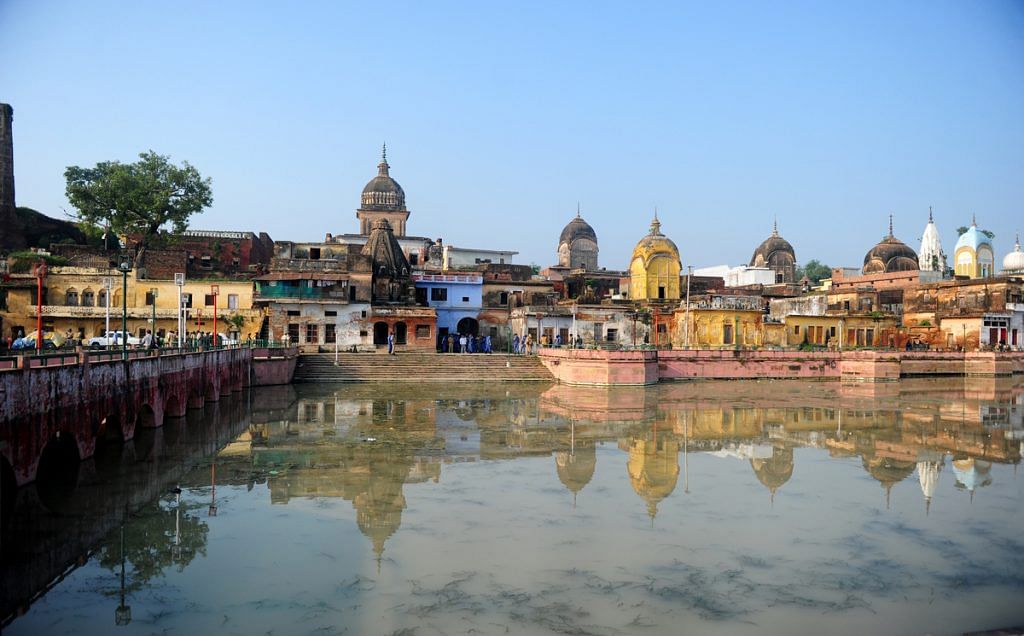PM Narendra Modi links Congress move to impeach Dipak Misra to the former CJI’s refusal to postpone the Ayodhya hearing to after 2019 elections.
New Delhi: Following in the footsteps of the leaders of the Rashtriya Swayamsevak Sangh leaders and his own party, Prime Minister Narendra Modi has dragged the Supreme Court into the ongoing battle of ballots in the five states.
Modi suggested that the Congress tried to intimidate the higher judiciary, even bringing an impeachment motion against then Chief Justice of India Dipak Misra in this regard.
Before Modi, several front-ranking RSS and Bharatiya Janata Party (BJP) leaders have taken pot-shots at the top court for not taking into consideration the feelings of the majority Hindu community and failing to decide an issue “so close to the Hindus” on priority.
Hindus, RSS leaders have said, were “feeling insulted” that the Ram temple issue which was linked to their “faith and sentiment” was not on the court’s “priority list”.
Lawyers in Rajya Sabha
Speaking at Alwar in Rajasthan Sunday, Modi insinuated that the Supreme Court was delaying the title suit dispute in the Babri Masjid-Ram Janmabhoomi case under pressure from the Congress and special interest lawyers. In doing so, he made the Supreme Court appear like it was under siege and was taking decisions under pressure.
To build this narrative, the prime minister even linked the absence of a timeline to decide the contentious matter by the top court to efforts of “Congress party’s lawyers who are in the Rajya Sabha”.
Modi termed this a “dangerous game”, suggesting that the Congress gave Rajya Sabha tickets to advocates practicing in the apex court who then used their privilege to threaten judges with impeachment. This not only prevented the court from hearing sensitive issues but also derailed the justice system.
He also directly linked the opposition’s failed move to impeach Misra to his refusal to postpone the Ayodhya matter to after 2019 as per the diktats of the Congress’ lawyers who are in the Rajya Sabha.
The fact that neither the Congress nor the BJP are party to the Ayodhya matter in the Supreme Court was not mentioned once by Modi.
“Congress creates an atmosphere of fear for the judiciary.. You know, when the Ayodhya case was going on, Congress Rajya Sabha leaders told the Supreme Court that they should not hear it till 2019, because there are elections,” said Modi.
The reference was to the request Congress leader and senior advocate Kapil Sibal, appearing for the Muslim group, made during one of the hearings in the case last year.
Modi also assured the judiciary that while Congress leaders couldn’t be pardoned for their black deeds and for browbeating the judiciary, his party would ensure that the judiciary remained completely independent.
Also read: Ram Temple is a national issue: Haryana CM Manohar Lal Khattar
What did Sibal want?
On 5 December 2017, Sibal had urged the bench headed by Misra to defer hearing the matter till after the 2019 Lok Sabha elections. He had argued that any developments in this case were likely to be used towards political ends during the elections.
However, the top court denied Sibal’s request.
Sibal, a prominent Congress leader and a senior advocate, was the counsel for Iqbal Ansari, the legal heir of Hashim Ansari, the oldest litigant in the case. Sibal had represented the Muslim faction on several occasions prior to the 5 December hearing as well.
In March, Sibal withdrew from the case. He was the only direct connection Congress had to the title dispute hearings in the top court.
What the case is about
At the heart of it, the Babri Masjid-Ram Janmabhoomi case is a property dispute. It involves the disputed land where the Babri Masjid, a 16th-century mosque once stood, before it was razed by kar sevaks on 6 December 1992.
In 2010, the Allahabad High Court divided the disputed land into three equal parts between the petitioners — the Sunni Waqf Board, the Nirmohi Akhara and the deity, Ram Lalla.
The Supreme Court has stayed the Allahabad HC judgment.
Also read: Madhya Pradesh BJP leader Sahasrabuddhe challenges Congress to support Ram temple
Back in spotlight
After lying dormant since the high court judgment, the case gained prominence when BJP leader Subramanian Swamy mentioned it in the top court in March 2017.
The court commenced hearing later in December last year.
In due course, various challenges cropped up, including the call for reevaluation of the top court’s 1994 Ismail Faruqui judgment. On 28 September, the apex court, in a majority 2:1 judgment, declined to refer the judgment to a larger bench.
The 1994 ruling — which allowed the Central government to acquire the disputed 2.77 acres, where the Babri Masjid stood before its demolition — held that praying in mosques is not an essential religious practice in Islam.
With this issue now decided, the apex court can hear arguments in the main Ayodhya title dispute. However, last month, the apex court adjourned the matter till next year in January and declined a plea for an early hearing.
An intervention filed by the Shia Wakf Board and a Buddhist Vineet Kumar Maurya has also been tagged with the original 13 appeals.
The legal issues surrounding one of the most controversial cases in recent times takes on added significance with the upcoming 2019 Lok Sabha elections, five months from now.
